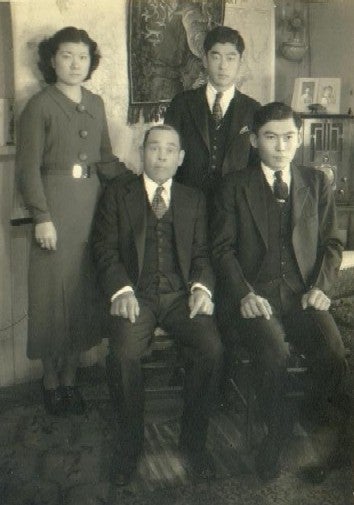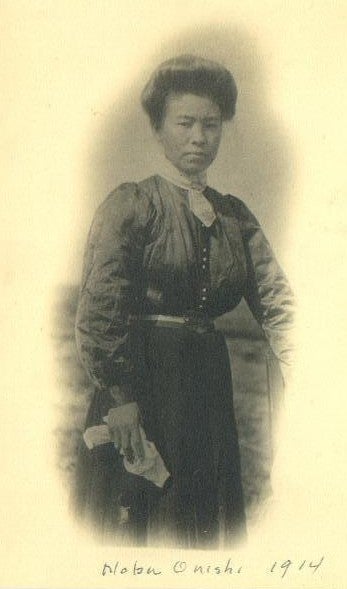The Onishi Family

Among the Japanese farming projects in the US, the Onishi colony was one of the most successful ones. Led by two cousins, Rihei, a journalist, and Toraichi, a wealthy wine merchant, the colony was established in the early 1900s around the same time as the Saibara colony. Rihei had convinced Toraichi to come to Houston to examine the prospects of rice farming, and the two cousins decided to buy about 300 acres of land in Webster near Saibara’s property. Rihei returned to Japan to bring back his wife, Hisa Nakahata, his daughter, May, and workers to help on his farm, as well as Shinriki (God Power) rice – a short-grain strain that prospered in the Texas soil.

Back: Katy (or Katie) Onishi, Lee Onishi
Front: Jitsuji Onishi, Holly Onishi Sr.
Although neither Rihei nor Toraichi was a farmer, with the help of the Japanese farmers they had brought to Texas, the Onishi colony was a prosperous venture in the early decades of the 20th century. The rising price of rice and the demand for food after WWI contributed to their success, and many of Rihei and Toraichi’s family members joined them in Texas as well. More workers from Japan also came to work on the colony, including Yonekichi Kagawa and his family. The influx of male immigrant workers was a concern for Rihei, since the men needed wives if they were to stay on the farm in the long-term. In 1909, he recruited seven or eight “picture brides” for his workers, but the group was denied entry after landing in San Francisco, having to sail to Mexico and cross the land border into Texas instead. It is worth noting that laborers in the Onishi colony did not only include Japanese farmers: Black, Mexican-American, and white sharecroppers also worked on the highly successful venture.

Wife of Jitsuji Onishi
This success, however, only lasted until 1919, when rice prices plummeted as Europe regained its agricultural stability. The Onishi colony collapsed in 1924, leaving Japanese laborers to find new employment in the US or go back to Japan. Rihei himself moved to Massachusetts and eventually returned to Japan, passing away in 1945. The only Onishis who remained in Texas were Jitsuji Onishi, a second cousin to both Rihei and Toraichi, and his family – his wife, Nobu, and four children: Flora, Holly Sr., Lee, and Katy. They would continue to farm, switching from rice to cotton and then to vegetables, perservering through the Depression and staying active in Houston’s Japanese community. Holly Sr. would marry Fumi of the Tanamachi family, before passing away in 1977 and leaving the produce business to his sons and his brother Lee. Despite lasting only roughly 20 years, the Onishi colony and its members undoubtedly left their mark on rice farming in Texas and the Houston’s Japanese American community more generally.
References
1. Walls, Thomas K. (1987) The Japanese Texans, San Antonio: University of Texas, Institute of Texan Cultures at San Antonio, 1996.
